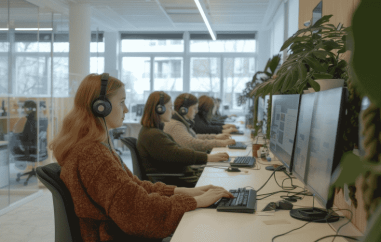Future smart devices might provide you with a feel for virtual textures and shapes
Imagine you are browsing the just-released iPhone that you would like to purchase on your tablet. Normally, what would that entail? A trip to the nearest store. However, what if your tablet allows you to virtually feel the texture and shape of that coveted iPhone by sitting in the comforts of your home? Sounds enticing and beats a trip to the Apple store, isn't it?
This is the experience that a group of researchers at Northwestern University and France's Aix Marseille University would like you to have in future.Â
Although touchscreens have transformed our lifestyle over the past decade, it is still a flat screen - unable to provide physical (touch) prompts. The research team, led by Northwestern mechanical engineering professor and Director of Laboratory for Intelligent Mechanical Systems, Edward Colgate, have explored what would it take to create this game-changing technology in a study published in PNAS.
The researchers found that in order for the touchscreens to be able to provide physical cues, it's important to have a reduction in friction between the fingertips and the glass surface of the device. However, the mechanism behind friction reduction has been unknown so far.
To find out how the system works, the scientists performed a study involving seven human participants whose fingers flicked back and forth on a glass plate specially designed to reduce friction. Using past concepts in the tactile sensor field, the researchers applied ultrasonic vibrations to the plate - known to reduce friction between the fingertips and plate. The finger motion during the vibration was measured and contact between the fingertips and the plate was imaged.
But there's a catch here. You may have noticed that upon continually pressing your fingertips against your smartphone, for example, moisture builds up quickly. And that is not good news since moisture could significantly alter the results of the friction experiment. In order to avoid the moisture problem, the researchers also built artificial fingertips constructed of aluminum cylinder representing the bone and a sponge-like material to represent the soft tissue and repeated the experiments.
So what did they find? For ultrasonic vibration that moves the glass surface as little as about 3 micrometers - nearly 40 times less than the width of a human hair, the scientists measured nearly a 95% reduction in friction force when a fingertip swiped the glass plate. And the reason for the reduction is a cushion of air trapped between the finger and the glass surface that bolsters these bounces preventing them from going out of control.
Together these results show the need for a bouncing skin motion and compressed air between the fingertips and the surface that will be successful in reducing friction.
Such studies improving our understanding of the physics of friction reduction would play a key role in designing smart devices in future, which would provide touch feedback.
Â
Image credit: https://pixabay.com/en/smart-watch-apple-technology-style-821559/
Â
Â







 »
»